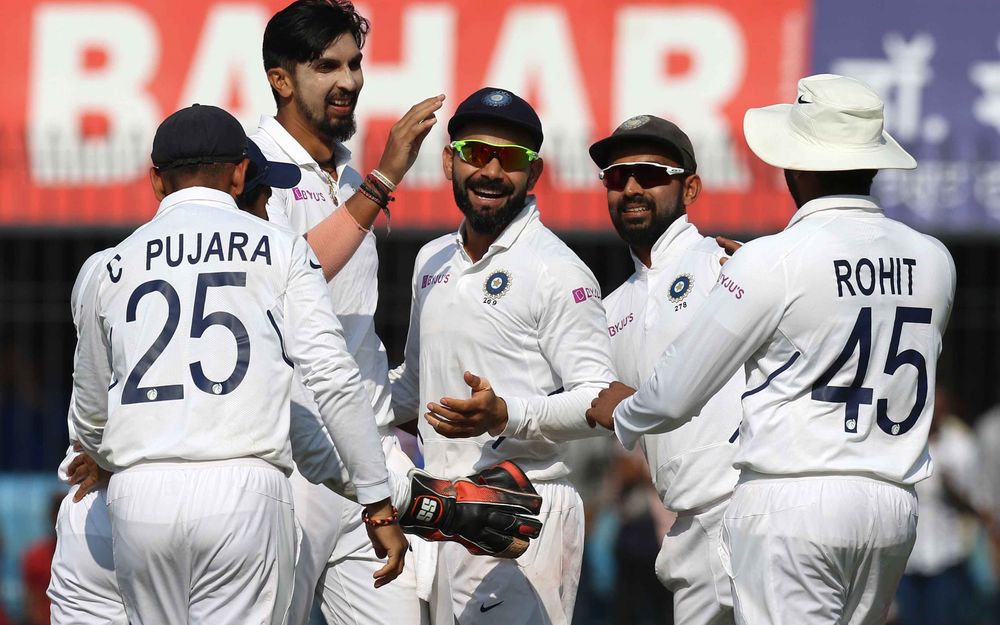IND vs BAN | Indore Day 1 Talking Points : Umesh-Ishant’s success in simplicity and Rahane’s forgettable day-out
In what was a ruthless domination of sorts, India bowled Bangladesh out for a mere 150 before reaching 86/1 at the Stumps of Day 1. While Mohammed Shami put up a spectacular display of reverse swing, Ishant Sharma and Umesh Yadav’s first spell was definitely the highlight of the day.

Keeping things simple - The Umesh-Ishant formula to success
When Mominul Haque called it right to choose to bat on a wicket that had grass over the red-soil, Kohli was delighted. The crowd in Indore, whose passion for the sport and the sportsmen are often unmatched, joined him too, waiting for the spectacle to unfold. After all, it was India’s pace battery that was the biggest revelation in the last couple of years. And as the first session ended, the crowd already had a taste of it, unlike the one they had witnessed in India’s thrashing of New Zealand three years ago. It was jaw-dropping.
The beauty of the prolonged pace attack was in the way they managed to play with Bangladesh batsmen's minds, and by not letting them have the advantage, even though there immeasurable dropped catches. Umesh Yadav started taking the ball into Imrul Kayes and once the opener seemed to have an idea of the pacer’s plan, the burly guy from Nagpur started slanting the ball straight to make the ball move across the line. Ishant Sharma, on the other hand, started bowling wide, before making the course correction to bag Shadman Islam’s wicket.
Both the wickets, especially the one by Ishant, were the gift of sticking to own strength, rather than being carried away by the excessive amount of carrying that was available off the surface. Due to the underneath red-soil imported from Mumbai, Holkar wicket behaved true to its nature, unlike the last time it hosted a Test match which had prompted Harbhajan Singh to call it a 'two-day-old' surface. It needed application and learning on the go, and how beautifully, Umesh and Ishant captured the essence.
The “Guardian” of the Cordon goes awry
While the popular perception says otherwise, R Sridhar's inclusion in the team set-up as the fielding coach in 2017 changed the dynamics of Indian fielding - both in the circle and in the deep - for good. However, if anything, fielding at the cordon has been a huge concern, with India employing Murali Vijay, Shikhar Dhawan, KL Rahul, Virat Kohli, Ajinkya Rahane, Rohit Sharma, Karun Nair, R Ashwin, and Ravindra Jadeja after Rahul Dravid-VVS Laxman era without any considerable amount of success.
Only Rahane and Nair can claim to be natural, but what could only be considered as ironic, the Mumbaikar dropped three catches at slip today. It was not the norm for him, and even cutting him some slack for the reputation he has, it cost India fair amount of runs. As a true slip fielder, Rahane doesn't necessarily use the legs to cover ground, rather he stays focused on the release point of the ball. While the first slip fielder must watch the ball right from the time it leaves the bowler's hand, the other slip fielders should only look at the edge of the bat. And that particularly affected Rahane today.
Maybe it had something to do with Wriddhiman Saha’s upfront position as his pads were facing the slip direction, which would have had an adverse sight problem for Rahane. Because all three catches that he dropped today was the result of reacting too late - which is uncharacteristic of him. One will never know but it is safe to assume that what happened today at the Holkar was one-off, and Rahane especially wouldn’t continue doing the same mistake come a fresh day at the cordon.
Brave call or lack of understanding?
Considering all the recent toss trends in India, it would have been easy to be carried away and Bangladesh’s newly-appointed skipper Mominul Haque surely did. On a wicket that had a visible amount of grass, Haque opted to bat first, majorly to stop India from scoring heavily - a trend that deserted South Africa massively just a month ago. But as was evident from Kohli’s reaction at the toss, it was a decision that had enough substance to be worried about. Batting was surely not going to be easy.
However, in reality, it was not as difficult as Bangladesh made it look like. The only way they could make the ball old was by trying to get a bat on the ball, instead of going on a mission of leaving it without any thoughts. Mominul probably trusted his top-order a bit too much to leave the ball, and their visible lack of quality was all the more apparent as they failed to do so.
That eventually played to India’s hands as Ishant Sharma, for the longest time in the game, was generating conventional swing with the ball while Mohammed Shami made it to reverse. With two different kinds of bowling on display, inexperienced Bangladeshi batsmen were totally caught in a shell, letting the hosts dictate the terms of the contest.

Comments
Sign up or log in to your account to leave comments and reactions
0 Comments